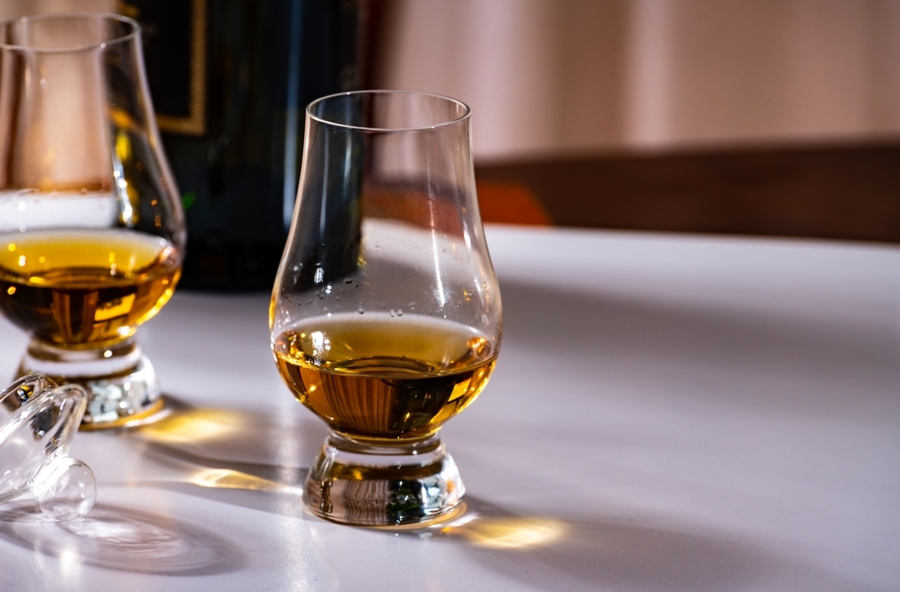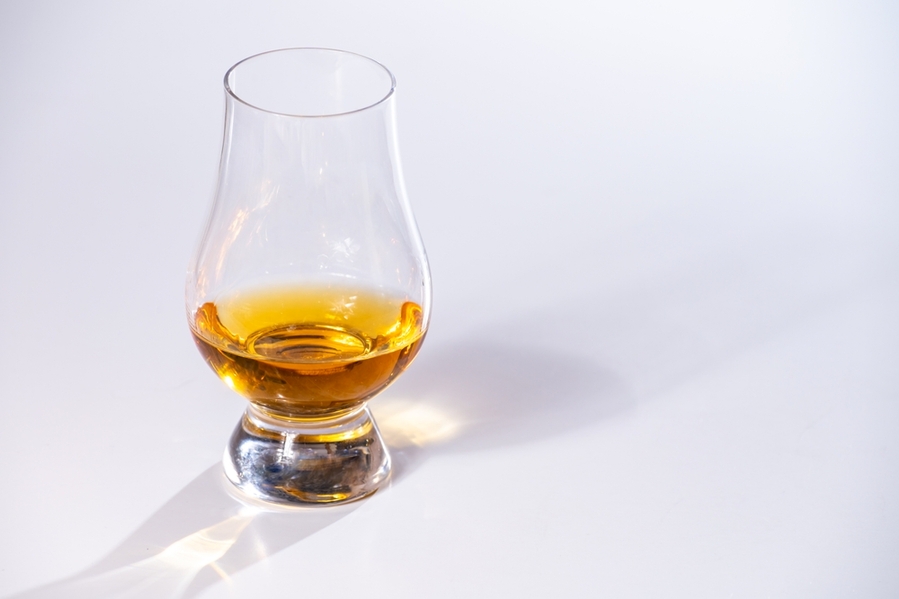
For novices in the whiskey-drinking world, or those preferring a whiskey with less of an alcoholic bite, smooth whiskeys are the best choice. Whiskey is a potent drink–we cannot get away from that fact.
But, you may look for an easy-drinking whiskey without the heavy peat and smoke tastes. Or something with a sweeter taste. This brings us to the question, what is the smoothest whiskey?
Basically, the smoothest whiskey is one that you can sip without a large amount of alcoholic mouth burn, stinging, coughing, or even gasping for breath. A whiskey’s color may show its smoothness–darker whiskeys mature longer, which results in a darker color.
Most people look for the least alcoholic ‘bite’ after taking a sip when considering a whiskey’s smoothness. Another ‘test’ to find a whiskey’s smoothness is to smell the whiskey.
Yes, there will be a slight alcoholic whiff, but smooth whiskeys won’t have an overpowering alcohol smell. You will also be able to distinguish unique aromas and notes within the smell.
We will look at how to find a whiskey’s smoothness before you sip it by considering its color and its smell. Ultimately, the taste is the biggest determining factor when looking for a smooth whiskey. Read on to learn more!
How To Determine Smoothness
To determine a whiskey’s smoothness, you look at factors such as the color, nosing or smelling the whiskey, and of course, tasting.
Ingredients also play a role–grain-based whiskeys are usually sweeter and smoother as opposed to malted whiskeys.
Observing the Color

The color shows a whiskey’s smoothness–generally, a darker whiskey was aged longer. But, the choice of barrel can give the whiskey a particular color, making it look darker, although it wasn’t aged for a long period.
The wood imparts color to the whiskey, and the longer a whiskey stays in contact with its barrel, the more color will develop.
An example here is Glenmorangie Vintage 1991–a deep amber-colored Scottish whisky. It starts the journey in bourbon casks, but later they age one half in Oloroso Sherry casks and the other in Burgundy barrels.
They combine these two with another dash of whisky aged in newly toasted oak. It is especially the Burgundy barrels that give the dark color.
Oak is a natural astringent wood. Whiskey, which spent too long in oak barrels, especially virgin oak, draws a zesty and/or bitter flavor–the opposite of what smoothness implies.
The post-maturation filtering through charcoal removes some of the unwanted tastes and congeners from the whiskey. They sometimes age bourbons requiring a quick maturation in virgin oak barrels.
Darker colors usually show a smooth whiskey. However, there are always exceptions:
- Jack Daniel’s Tennessee Honey: It is a light amber-colored whiskey mixed with their own honey liqueur to produce a smooth-tasting whiskey. Of course, the honey also helps to create a smoother taste.
- Jameson Irish Whiskey: Although a light-colored whiskey, the triple distillation results in a smooth-tasting whiskey of 40% ABV.
Nosing

Younger Scotch whiskies, around five years old, will have a higher alcohol smell than others that have been aged for a longer time. Another indicator is a slight burning sensation in the nose–usually found in a younger whisky.
Blended whiskeys are an exception. These whiskeys are usually a combination of malt and grain whiskeys, usually containing more grain than malt. Distillers combine different flavored whiskeys and vintages to produce a smoother-tasting final product.
A smooth whiskey will still have identifiable aromas despite the alcohol content.
The First Taste

A strong, young whiskey may cause some people to cough or momentarily gasp for air. For a whiskey to be smooth, it has to be a genuinely enjoyable experience and not overpower the mouth with the alcoholic burn.
After the first sip, take a deep breath and note the aftertaste–this is the finish. A smooth Scotch whiskey will not leave a harsh alcoholic sting or taste in your mouth.
American bourbon, made from at least 51% corn, combined with either malted barley, rye, or wheat, delivers smooth-tasting whiskeys.
Flavor profiles may include a caramel or vanilla aftertaste, sweetness with hints of soft spices, and woody flavors. Rye is not as sweet or smooth as its cousin’s bourbon.
Another American whiskey is Tennessee whiskey. It is exclusive to the state of Tennessee, while they may produce anywhere bourbon in the USA. The Lincoln County Process uses predominantly charred maple charcoal to filter the whiskey; sometimes, they also steep it in the charcoal.
This delivers a smoother whiskey by removing the ‘impurities’ and other congeners while mellowing the whiskey. Distillers do the charcoal filtering process before aging the whiskey in new charred oak barrels, while they filter other whiskeys after aging.
The high corn content in Canadian whiskey produces smoother, lighter, and slightly less flavorful whiskey than the American neighbors. It is the corn that produces a smooth whiskey, though.
Conclusion
Three factors are important when determining a whiskey’s smoothness–the color, the nose or smell, and most importantly, the taste.
Darker Scotch whiskies are smoother because someone aged them longer. Blended whiskeys are another option when looking for the smoothest whiskey–master distillers select the best of their offerings and blend them to achieve the smoothest viable product without stinging the palate.
There are smooth options available in all the whiskey variants, Scotch, American bourbon and rye, and Canadian whisky.
The smoothest whiskey is the one you like and feel most comfortable with. The one that contains aspects you adore. It is the whiskey you always return to because you like its color, smell, and taste.









